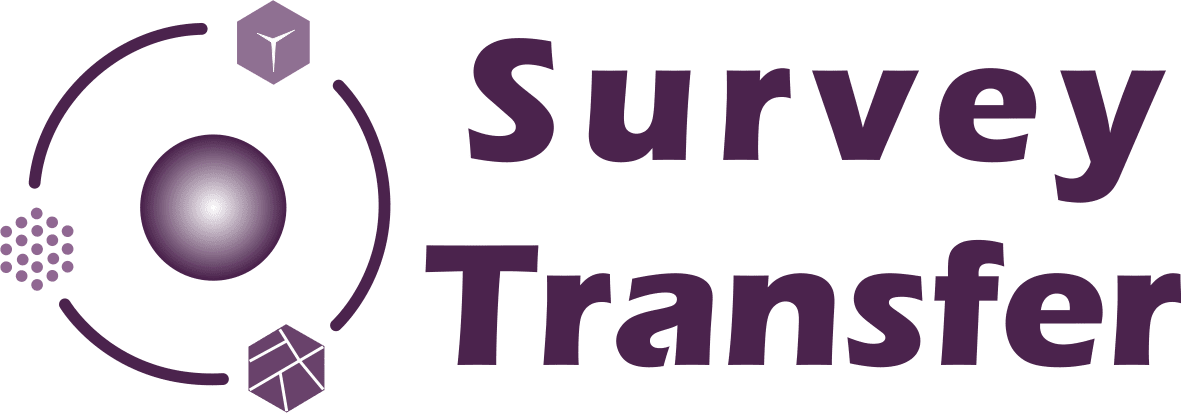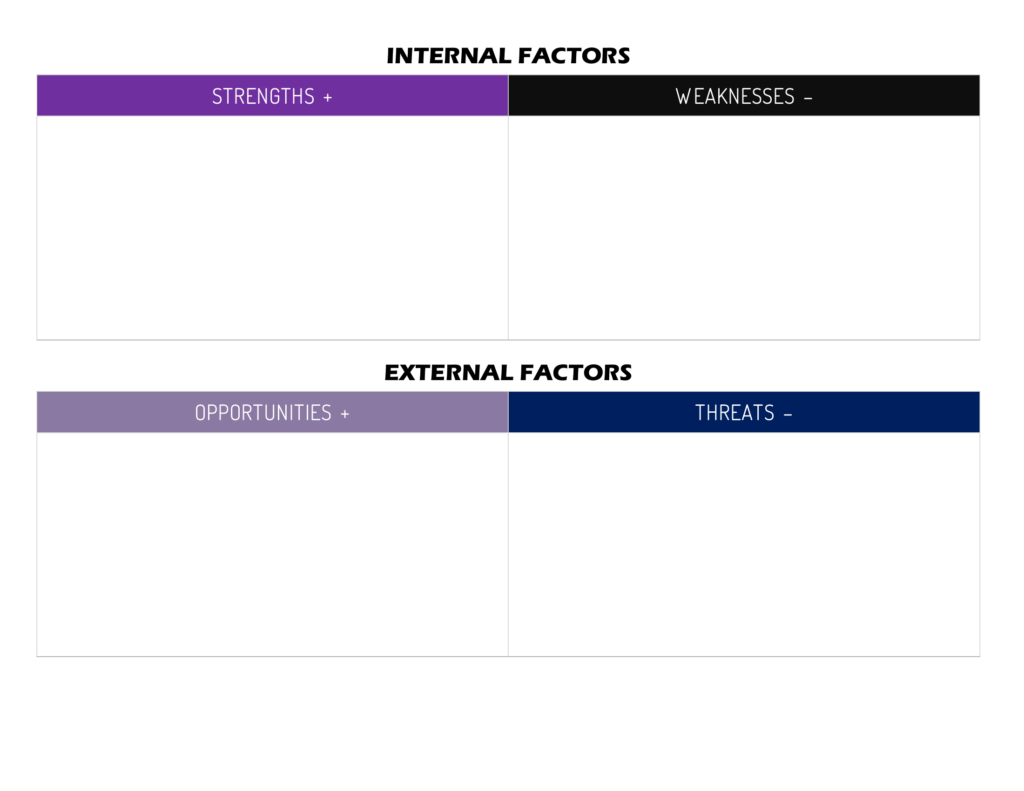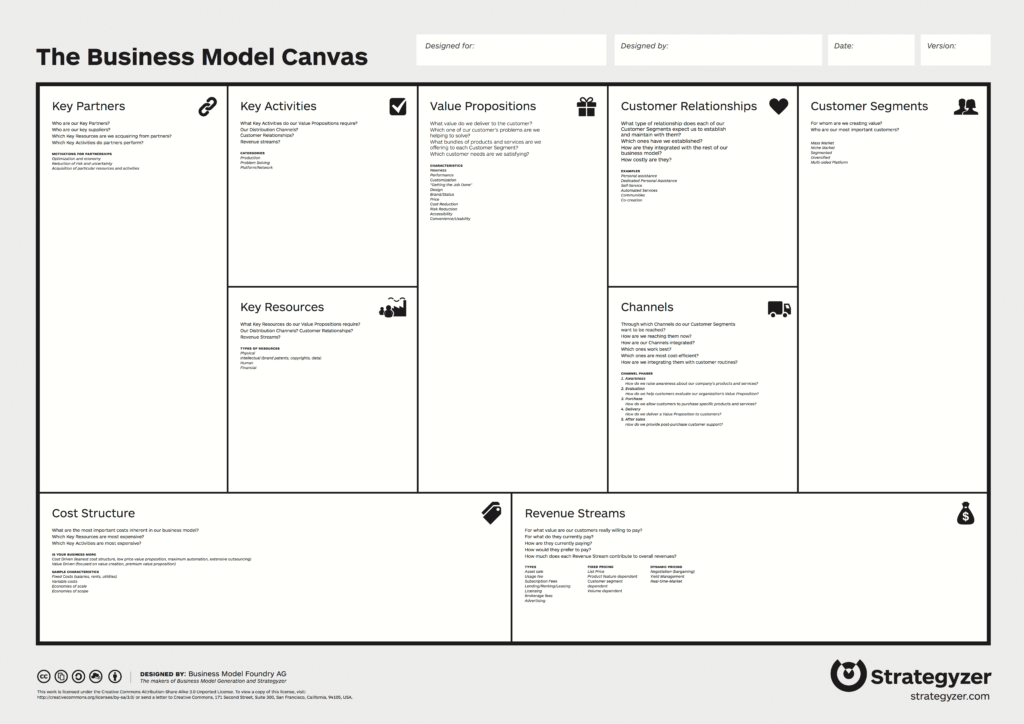1. DETERMINING THE TARGET MARKET AND BUSINESS HYPOTHESIS
To start a drone survey business, you must first ask the question: Which industry do I target with my service? If you focus on all available areas, from architecture to agriculture to monument protection, you will not delve into the needs of your target market, you will not get to know the market actors, and you will not be able to build up targeted, specialized knowledge. Concentrated industry knowledge is essential to be able to interpret the results of your survey and provide an expert opinion in addition to the maps and 3D files provided.
My first advice is to start your drone services by writing a hypothesis that includes your target market and the proposed drone service. The more specific it is, the more it will point you in the right direction. Here is an example: “Within the agricultural sector, those who have more than 50 acres of land have a hard time assessing where waterlogged areas are formed, which impairs crop yields. These farmers would need someone to survey these areas quickly and regularly (on a monitoring basis), without trampling the crop, using a drone.”
2. FIND OUT WHAT YOUR TARGET MARKET WANTS WITH A DRONE SURVEY
With the advice in the first point, you have a drone business hypothesis. Great! Have you determined a real market need or just good-sounding bullshit? How to validate the idea? There are many methods: in-depth interviews, questionnaires, focus group discussions, etc.
In the B2B, one of the best methods is interviewing. How do you get started? The formula is very simple! Make a list of companies/farmers/offices that seem relevant to your target market. Then write them a nice contact letter saying that you would like to interview them, because you are very interested in the field they work in, and you would like to get an in-depth view of their operation. As surreal as it sounds for anyone to respond to such a thing, it still works! People, especially senior managers, like to talk about their company, as it is a source of pride for them and a point of success in their career.
So, you’ve organized a couple of interviews with potential partners in your target market, the next problem comes: What should I ask them? Obviously, your goal is to find out if your business idea can be sold if you start the drone service, but don’t ask about this directly at the beginning of the interview, don’t reveal your idea right away! I’m not saying this because someone would see such a business potential in it that they would steal your idea, there is a psychological reason for this. Think about it, if a stranger asked you about his business idea and talked about his business with sparkling eyes and enthusiasm, you wouldn’t tell him “This is a stupid idea and no one will ever pay for it!”. Let’s be honest, people lie (what a paradox this sentence is) 🙂 How can you map (if we’re talking about drone surveys) the potential customer’s pain points? I recommend an excellent book for this: Rob Fitzpatrick: The Mom Test. In a nutshell, this basic work is about not asking targeted questions, but asking about projects and getting your interviewee to talk. If someone tells a story, it reveals what they are satisfied with and what is the pain point for them. It is very important that you do not go to the interview to sell, do not try to convince your interviewee, accept their opinion!
Write a script for the interview! I will show you a template that you can use to build your own series of questions:
- Introduction:
- Say thank you to the interviewee for the interview opportunity, tell them why you organized the interview: it is enough to say that you are working on starting a business that is NOT competitive for him and you want to learn about the specifics of the industry.
- Emphasize to the interviewee that you have looked into his activities and that you particularly like the way he does “this and that”. Feel free to praise him!
- Warm-up questions:
- Why did you choose this field/industry?
- How do you see the future of the industry? (the market development and trend can be determined from the answer)
- What are the main challenges?
- Is there a lot of competition in this area? (extremely important question due to market size estimation!)
- Pain point determination:
- Could you tell me how the last project was organized and how you managed to complete it?
- How do you think efficiency could be increased?
- Have you checked to see if there is a solution to this problem?
- Have you heard of drone surveys, what do you think about them?
- Closing:
- At this point, you can tell the essence of your drone service. What do they think about it? Could this help with the problem you outlined?
Repeat the interview with at least 8-10 relevant companies operating in your target market, as clear conclusions can only be drawn from this amount.
3. VALIDATE YOUR BUSINESS IDEA
After concluding the interview, evaluate the results: what were the common points? Are they interested in a drone survey? Can the entire market or only a well-defined segment be assumed to be interested in your service? Who are the people to whom the service can be sold? How big is this market, is it worth getting into?
Your evaluation can be greatly helped if you put all of this on a so-called Value Proposition Canvas. This visual aid structures the pain points that arise in your target market, the “pain relievers” that can be given to them, and the gain creator parts of your service.
If you feel without self-deception that you have received positive results for the questions above, then the first phase of service development can begin. If the results of the in-depth interview show that the target market of your business hypothesis is interested in the drone survey, but they imagine something different than what you have outlined, then you need to change direction, this is called pivoting. When changing direction, you can adapt your preconceived business model/plan according to market needs.
4. BE FLEXIBLE, ADJUST YOUR BUSINESS IDEA TO THE MARKET
What’s the next step if you’ve found the right business direction? In terms of business considerations, I am a supporter of the Lean method (read more: Eric Ries: The Lean Startup), i.e. every business step should be carried out objectively, cost-effectively, with immediate market feedback, and then iterate the business model based on experience in a sustainable direction. Based on all of this, I suggest that you create – even a fictitious – sample area, where you show what you can provide within the framework of your service. At this point, you don’t even need to have a survey drone or paid software. There are many free data sources on the web, use one! This cost- and time-efficient rudimentary product/service is called a minimum viable product (MVP). Prepare a presentation material, then go back to your interviewees to show that you came up with this service based on the conversation. Ask them what they think about it.This will be the testing of the MVP (ultimately this is part of the “product-market fit”).
If the result is that they are still not interested or you still need to adjust the service, don’t be discouraged! Think how good it is that all this was revealed before the expensive purchases (drone, PC, software, marketing, etc.)! If the drone survey as a business idea does not carry much novelty, that is also no problem, take a look at what the well-functioning/leading companies in the market are doing, and see if they provide you some kind of inspiration for the future.
5. KNOW YOUR COMPETITORS, OUTLINE YOUR ADVANTAGE!
A sensitive, but unavoidable topic! There is competition for markets, this is not in dispute. The cheapest, best quality, fastest drone survey service wins here, or maybe not? Many people think that only these three aspects can be used to create a competitive advantage, but this is a huge mistake! This trio is complemented by a number of increasingly decisive factors, such as a customer-oriented approach, the willingness to educate, ensure customer experience or reputation and marketing activities.
I suggest you outline in which qualities you can be strong and in which you are lacking, what your opportunities and threats are, and prepare a SWOT analysis! This helps you clearly see and position your service within the market.
6. DRONE SURVEY OPERATIONAL TASKS – PRACTICE AND DOCUMENT BEFORE LIVE DEPLOYMENT
Since this industry is based on intellectual capital, it is essential to be a professional in both planning, field drone data collection, and then data processing, evaluation and sharing of results. Quite many tasks,, and it is not easy to see through everything, but the SurveyTransfer team does not leave you without information and help! 🙂 Visit our blog and use the valuable content found there!
During drone practice, you should document the most important parameters, e.g. drone battery time in different flight modes; when a survey is optimal – taking into account different flight speeds, overlaps and flight altitudes.
Make a drone checklist, which can consist of two parts: field tools so that nothing is left at home; the other for the surveying process (e.g. what steps are required for flight planning).
7. ONLINE MARKETING – A MUST!
I’ve heard many times that “I have a stable customer base; I don’t mess around with marketing nonsense!”. That’s great, but what if that steady list of 2-3 clients suddenly dwindles down to 1 paying client…? The direct consequence of this is that you will not have enough income and as long as you did not “believe” in marketing and did not gain wider recognition, your competitors will fish out your potential customers. In today’s world, it is a luxury if you are not present in the online space.
What are the basic ingredients of online marketing?
- A good, fast landing page with a clear message. Take a piece of advice and neglect custom-developed websites because you’ll just suck at it in the long run. A website based on Wix or WordPress is good enough. Why is it better than a custom development? If you can’t hire a web designer to create your website, you can try to create your own. Buy a premium template in which you just rewrite a few text blocks, upload a few images and you’re done. On an annual basis, you can get away with the operation for $100-150.
- Still the landing page… Proper Call-to-Action (CTA) buttons, messages. If the purpose of your page is to make contact, then don’t hide it from the visitor. Flash it as creatively as possible 🙂
- Analytical tools to understand what is on the minds of your users. WordPress or Wix is also good because, with the help of simple plugins, approx. You can install Google Analytics or Search Console in 5 minutes. These are particularly useful tools for tracking site visits, where did the users come from, how long did they spend on the page etc.
- Create even rudimentary brand elements and graphic templates. It’s okay if you’re not the greatest Photoshop wizard, dream up some rudimentary logo and color scheme and use it on all your surfaces.
- Be available on social media! It is now essential to be present on Facebook, LinkedIn, or other social media platforms where your target market can be found. Create a page and post at least once a week. If no one follows your page in the beginning, don’t be discouraged, because by continuously posting you are not initially building a community, but communicating that your business is alive and that you are present on the market. You should prepare a posting plan. A subjective opinion: I think that a person who works with drones has a pretty easy job, since the people of the internet buy it after seeing a spectacular aerial photo or 3D model 🙂
When most people hear the word marketing, they don’t think of the above, but of burning money, search engine optimization (SEO) and a plethora of Pay-per-click (PPC) campaigns. I wouldn’t recommend these for a new business because of the tight budget. If you do decide to do it, then create an advertising campaign or optimize the website for search engines only with the involvement of a marketing expert. If you start a paid campaign yourself without marketing experience, you can burn a lot of money and most likely it will not pay off.
8. SALES OF DRONE SERVICES
Sales is not a simple issue, but there are basic methods and channels that you can use to start selling with good chances 🙂
First and foremost – a bit general – is to know your customers! Look into, do research on what a potential customer does and look for points of connection. If you think with the client’s mind and make an offer that matches their value system, it is much more likely that your efforts will result in a deal than if you throw out all the services you provide for them to choose from. They won’t think through what and why would be good for them, you have to answer these questions yourself!
The first sales method is sending out eDM (electronic direct marketing) emails. Search for relevant companies to whom your service can probably be sold. Collect the names, e-mail addresses and all other important information of the decision makers. After all this, write a not-too-long, to-the-point and specific email to the companies. I recommend that you address the recipient by name, outline the points of connection (selling) and ask for a meeting. If you want to be really professional (of course you want to 🙂 ), send a nicely formatted HTML email. A good tool for creating an HTML letter is MailChimp. In addition to eDM, you can also try cold calling, but this is not very effective these days.
Build relationships by attending workshops and conferences. Don’t go to a conference that talks about drone surveys, go to one where your target market can be found. For example, if you survey agriculture, go to an agricultural event and try to build relationships there.
It is important to have something to give to the potential partner. Create a unique proposal letter that you can give to your potential customer either electronically as a PDF or printed out. I have prepared the SurveyTransfer proposal, so you can see how it is worth getting started, you can see it by clicking here! 🙂
With a few exceptions, drone surveyors are mostly selling in B2B (business-to-business) and B2G (business-to-government). You should definitely keep this in mind in your communication, as this is a defining part of finding customers in your target market, because you are not selling a simple product that affects a large number of people.
At the end of the whole sales idea, I would like to bring in the personal meeting and the salesman’s attitude, with which many people identify the entire sales activity (incorrectly, I might add). It’s not sales – especially not in B2B – when you talk endlessly. It’s much more important to appear reliable, prepared, and someone who doesn’t want to rip off their customer, but wants to deliver value. Be inquisitive, ask a lot of questions, understand your customer, and don’t try to force your service on the customer. If you are helpful and strive for a win-win situation, it will be much more sympathetic than a speech full of bullshit.
9. ENSURING CUSTOMER EXPERIENCE FOR RETURN BUYERS AND GOOD REPUTATION
Customer experience is an undervalued but extremely important business aspect for many. It is not enough to sell a drone survey once; valuable customers must be engaged so that they return and purchase the service again. You can only achieve this if you provide an experience behind your service. Many people find this elusive, and in the world of surveys, it’s easier than you think.
What customer experiences can we talk about in connection with a drone survey?
- Attention and quick response to questions/requests;
- A project executed according to the client’s needs, i.e. you don’t want to upsell each step;
- Willingness to educate: you tell the clients what options they have;
- A small gift in the service, e.g. free consultation;
- Continuous information about the progress of the project;
- Easy, user-friendly way to transfer the result.
At this point, my dear reader, allow me a paragraph of short self-promotion 🙂 SurveyTransfer specializes in easy and user-friendly data sharing (yes, you are on the SurveyTransfer page right now). We are developing a web-based data sharer that functions as a Google Drive for geospatial data (maps, 3D files). It is enough to send your clients a link, which they can open even on a mobile phone and see the results of the survey immediately, without any download time! SurveyTransfer can be used for data storage and is outstanding as a project management tool, as you can leave inscriptions and comments on the map and 3D file for your clients, and they can respond to them. Due to fast and efficient communication, project closure can happen days or weeks earlier than planned. You can read more about photogrammetry project management by clicking here, while you can read about data sharing options here.
10. MAKE A BUSINESS PLAN – DRONE SERVICE AS A STARTUP
Before you start shaking your head, “I don’t need a startup, I just need a small business”, the term “startup” is not a company form! A startup means that you want to venture into something new under extremely uncertain conditions, i.e. the risk is high. If you think about it, ideally, a business strives for predictability, stability, and development throughout its life. In the case of a startup business, it is even more decisive that you enter the business world by reducing the risk factor. Almost all the points in the current article are about what small and large measures you can take to reduce the risk.
What’s also important in terms of business planning is that you define achievable milestones (goals) at least quarterly, which help you focus on the big picture of your business.
The next important step in starting your drone business is to synthesize information and knowledge. It’s not easy, but I’ll give you a little help! 🙂 There is a good template for this, the Business Model Canvas:
Financial planning is an essential element of the business planning of your drone business. This document is responsible for ensuring that you clearly see the costs of starting and then running your business. Next to the expenses page, outline how much income you can realistically (and don’t fool yourself with unnecessarily large numbers here!) earn. It is advisable to break down the financial year planning into months and prepare a profit and loss statement, which sheds light on the cash flow and the expected quarterly balance sheets. If you are not familiar with these, then visit an accountant who will inform you about them, or even look for a template excel table on the Internet.
Regarding the financial side, I can also advise you to build your business on a small scale, with gradual development. Even if you have plenty of capital, it is not worth investing in the most expensive drone, PC and software. Start with an entry-level drone, take on smaller projects that involve a smaller area to survey, so you can work with a smaller amount of data. If your data to be processed is small in volume, you do not need to buy an expensive PC. Don’t skimp on desktop processing software. I recommend cloud-based processors only for learning purposes because you cannot freely modify your file during processing. In addition, if you add up how much you spend on a cloud-based license in one year, the desktop software with a one-time payment will be a similar amount.
I hope you liked this unusually non-technical, but business-oriented article. If you liked it and would like to read something similar, write to us and suggest even a topic idea 🙂
If you really liked what you read, you can share it with your friends. 🙂
Did you like what you read? Do you want to read similar ones?






